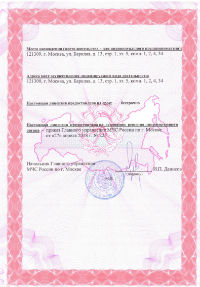Ceiling plastering
Plastering of ceilings is one of the most complex and labor-intensive processes. It is recommended to be carried out if the ceiling variable level does not exceed 5 cm. It is important to note this kind of work costs lower than that of a stretched or cassette ceiling. Moreover, plastering of ceilings is the best eco-friendly choice.
Stages and technology of plastering
Plastering works will be done in high quality if a ceiling surface is properly prepared, materials are correctly selected, and the specialists are highly skilled.
Traditionally, plastering of ceilings is carried out in several steps:
1. Preparatory works:
- To secure the plaster mix on the ceiling the surface must be cleaned of dirt, fit-out elements and old plaster;
- It is necessary to prepare the ceiling for plastering, covering it with primer to get smooth surfaces;
- After priming it is necessary to stop the work for at least 12 hours allowing it to completely dry out in a natural way;
- It is important to patch up all the irregularities, spalls and holes on the surface.
2. Plastering ceilings with corner beads:
- Installation of corner beads by drilling holes in the ceiling center and its edges for tightening screws, plastic dowels. This is followed by checking the level, making tracks from the mix between beacons, and installation of perforated profile. After installation of corner beads the work needs to be interrupted for 1 day.
3. Plastering of ceilings.
Plastering of ceilings is carried out using the lath (if the plaster layer thickness exceeds 15 mm) or without it.
4. Preparation of plaster mix.
5. Application of plaster in several layers.
6. Removal of corner beads and patching up of grooves.
Plastering of ceilings: materials and tools
Manual plastering, with prices quite available today, is carried out with the use of high-quality and modern materials. Most often, gypsum- and cement-based plasters are used, mixed with water before application. For better grip of mixture onto the ceiling sometimes a welded galvanized metal lath is used. When selecting primers, attention should be paid to products containing quartz grains, which form a rough surface similar to sandpaper after stiffening, and provide the best surface adhesion. Usually ceilings are plastered with instruments such as electric mixer (scapula), spot board, trowel, metal trowel and float, which are needed for surface preparation, as well as preparation and application of the composition.
Int-Ext Company renders services of wall and ceiling plastering. Our specialists will readily carry out for you manual plastering of any complexity in the shortest possible time, using well-chosen high quality materials.
Request for Proposal
A request sent to Int-Ext company will not remain unanswered. We will quickly analyze it and get in touch with you to prepare a proposal as per your request. Please fill in the form below.












